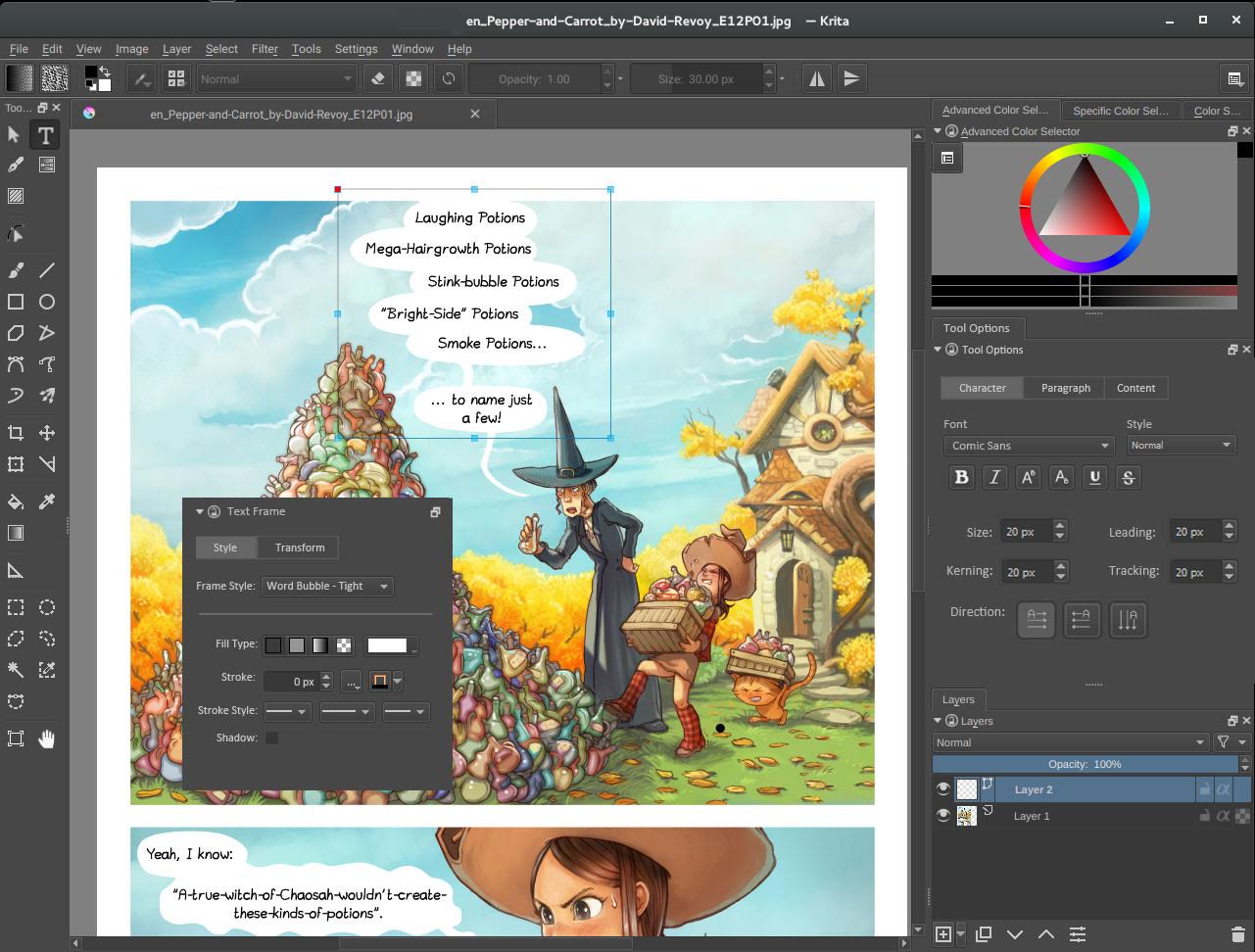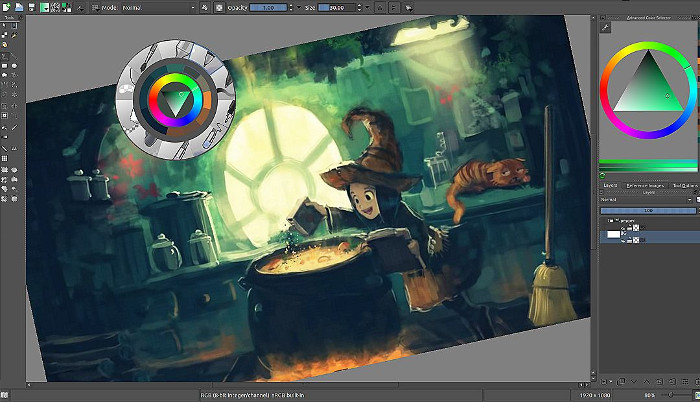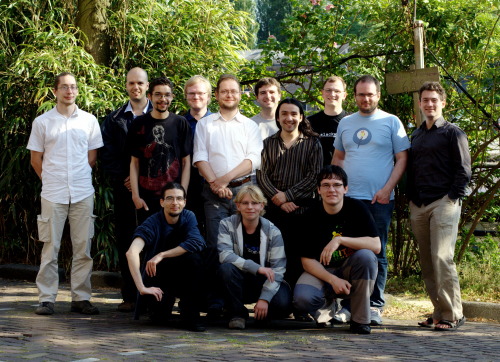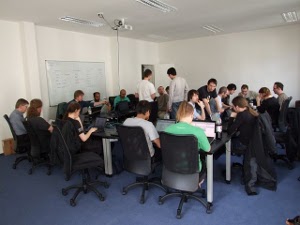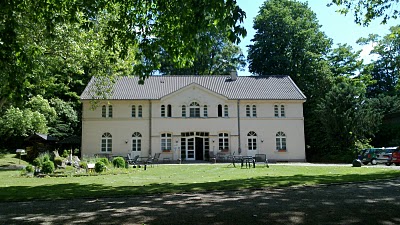Today we kick off the third Krita kickstarter! It's beginning to become a tradition. Last year, our Kickstarter backers funded the development of performance improvements and animation support -- and a bunch of other features. Right now, we're still working on finishing up the Krita 3.0 release before we implement the last of the stretch goals you all helped fund last year.
Read MoreBoudewijn Rempt
Performance and Animation: Krita Kickstarter Kicks Off
It was a great year for Krita all-round, with the Steam release, a booth at SIGGRAPH, and the Artists' Choice award in ImagineFX magazine.
Read More2014 Calligra Sprint in Deventer
Krita Kicks Off 2.9 Development Effort with a Kickstarter Campaign
Five years ago, the Krita team decided raise funds to raise Krita to the level of a professional applications . That fundraiser was successful beyond all expectations and enabled us to release Krita 2.4, the first version of Krita ready for professional artists!
Read More2014 Krita Sprint in Deventer, Netherlands
Calligra Sprint Lays Ground For First Release
In the weekend of November 11, more than twenty Calligra developers braved the fierce weather of Helsinki to meet up again! Well, the weather wasn't that fierce actually, but it could have been! We met up in the office tower that houses Nokia's research department during the weekdays for two days of hacking, presentations and meetings. For several attendants it was their first travel to a community gathering: welcome Smit Patel, Brijesh Patel and Dimitrios Tanis!
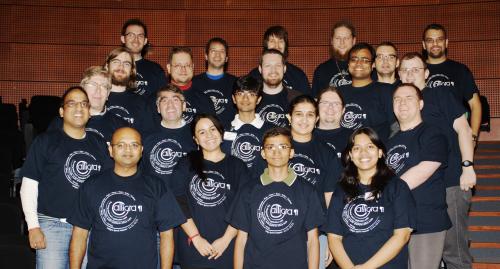
Calligra Sprint attendees
Some highlights: the Saturday morning meeting where we decided to have one or two additional beta releases -- and the same day our Release Dude (who couldn't be present, unfortunately) came up with the same idea. It's not that we don't want to release, but the first Calligra release has to be good!
Saturday afternoon, SKF gave a remote presentation on how they are using Calligra Words as a report generator/editor in their tool. Their usage is very advanced, it includes RDF, for instance, and the presentation was a huge success. It's always great to see the results of your project in actual use!
A similar presentation was given by Nokia the next day: we were shown how well suited the Calligra office engine is to power the Harmattan Office application on Nokia's smartphone, the N9. This being a developer meeting, a slide that showed that we're doing better than Microsoft's mobile office was followed by four slides of Highly Important Bugs in what we can improve to make Calligra even better!
But that was great as well -- as great as the lunches and dinner Nokia provided for all of us. Thanks go to Nokia and KO GmbH for sponsoring travel and accommodation, and Nokia for sponsoring food and drink for the whole group! Thanks also to Claudia Rauch of KDE e.V. for helping with getting help on the organisational thinks like visas.
And now everyone is home, it's time make our code ready for the long awaited first release of Calligra, Calligra 2.4
Be Part of Krita's First Training DVD
What happens When Artists and Developers Come Together: The 2011 Krita Sprint
In what is beginning to become quite a tradition, the Krita team came together from May 20 to May 22 for the third Krita meeting. The first sprint had four attendees. Last year's, eight. This year, we had twelve people in attendance. If the trend continues, the Blender Institute, which hosted our sprint, will be too small for us next year!
Friday
Friday was mostly spent arriving, getting network access, doing preliminary hacking and so on. The real core of the sprint took place on Saturday. In the morning, we had an Artist's Demo and Gripe Session. The four artists present took turns demonstrating how they work with Krita. With a projector, everyone could follow along. We managed to record a screencast of all sessions and a video/audio recording with the Blender Institute's camera. The Krita webmaster, Kubuntiac (or Bugsbane) is busy editing the screencasts, video and audio together into a smooth recording. The results will be available on krita.org. The recording will be available as soon as it is done, together with the original .kra Krita files and brush presets as provided by the artists.
Fortunately, none of the artists managed to crash Krita, and we took note of all the issues they mentioned, which Pentalis entered into bugs.kde.org. More than sixty new issues were logged. Quite a few of those issues were fixed during the weekend and over the next week. David Revoy's conclusion was that Krita is plenty okay for creating art, but not yet quite ready for the professional user.
And that set the tone for the afternoon meeting, during which we discussed the direction for Krita for the next year. This can be summed up as: polish, polish, polish. Performance is ok. Stability is pretty good, though it can be improved. But all the little speedbumps we witnessed when watching the artists work with Krita (each in their completely individual and different way) need to be smoothed out! We also conceived of another plan... Something wickedly cool we want to ask the community to support... More about that in a few days...
Saturday
On Saturday, we met our benefactor, Silvio Grosso. After the runaway success of the 2009 community donation drive to enable Lukas Tvrdy to hack on Krita full-time for three months, Silvio made it possible to extend that period for several months more. He also sponsored Dmitry Kazakov to spend more hours on Krita after his Google Summer of Code project ended. It was great to meet him in Amsterdam at the sprint. We had a group photo, of course:
Apart from the group photo, Timothee Giet also made quick sketches of all attendants. Meet the gang through the sketchbrush of Timothee!
Sunday
Sunday was a relatively quiet day. People were mostly hacking and doing small bof-like discussions. David Revoy tried once more to follow a proper CMYK-based workflow with Krita, this time producing a tiff file that imported perfectly in Photoshop. We originally added CMYK to Krita not from a strong belief in its usefulness, but to quiet vocal critics. We since have discovered that many artists work in CMYK in order to keep track of ink coverage and mixing during the creative process, instead of having to change their work afterwards to resolve out-of-gamut colors. There is still a ways to go here: extra single-color channels or layers would be useful, and the channel docker does not always do the right thing.
Finally, we are grateful to our host Ton Roosendaal, who allowed us to meet in the Blender Institute in Amsterdam. For David Revoy, it was like coming home -- and for the rest of us a wonderful place to get together. One of the unexpected advantages is that the Blender Institute's doorbell never stops ringing. All weekend, game designers, Blender hackers, 2D and 3D artists visited, passed the time, and gave us the opportunity to show off Krita. Many thanks as well to KDE e.V. for making it possible to bring so many people to Amsterdam from all over Europe, Canada and Chile.
First Calligra Sprint
Over the April 1st - 3rd weekend, the first Calligra sprint took place at the KDAB office in Berlin. With a total of 31 people from 14 nations, the room was crowded to the bursting point! It was a very successful sprint, and the first KDE sprint for many of the attendees.
Read MoreKOffice 2010 Summer Sprint Report
With the weather being perfect, the hotel hospitable and the surroundings leafy and all a-twitter we not only hacked and discussed. There was time to relax over a beer, get to know each other a little better and stroke the hotel cat.
Read More